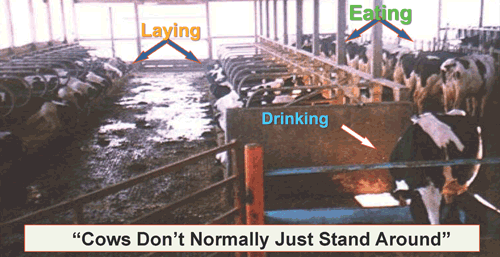
The ninth Hoard's Dairyman webinar of 2012 featured Gordie Jones, a veterinarian and partner at Central Sands Dairy in central Wisconsin. The operation milks 4,000 head in a 72-cow rotary where cows are housed in sand-bedded free stalls.
In his early days as a practicing veterinarian, Jones focused on treating his clients' cows. Now, he manages prevention practices in his own herd and consults for others. If producers focus on nutrition, dry cows and comfort, the issues of sick cows, breeding problems and mastitis will be greatly minimized.
He referred to the analogy of the dairy farmer who was having a sale to disperse his herd. The sale manager made some alterations – opening the barn for better ventilation, cleaning the cows and bedding them with plenty of straw. The producer remarked that his cows jumped up in production and commented that if his cows had milked that much, maybe he should not be having a sale. Sometimes, it takes seeing things from a different perspective and changing from the normal routine to see the differences.
"Cow comfort makes a ration work." Cows should only be standing to be milked, eat and drink. The rest of the time, they should be lying down. There is no need for them to just be standing around. At Central Sands, an hour of wasted time standing in a holding pen was costing over 2.5 pounds of production due to less time eating or resting. They quickly altered the routine of the employees to minimize the lost time. Over the whole herd, those small pounds can add up to significant production sacrifices. In a 24-hour day, cows should be eating, drinking and milking for 20 of those hours. Cows should spend no more than those remaining 4 hours away from food and bed. If greater, it is costing you in lost production.

The single biggest point, he stressed, "Cows need half of their daily feed available to them as soon as they exit the milking parlor." If they have to wait for feed, you have missed the greatest chance for them to get a full meal. They will eat and then rest for 6 to 8 hours. You want them making milk with a full ration when they rest. For every extra hour of lying time, a cow produces four more pounds of milk per day, according to Miner Institute research. Project that over your whole herd, and each hour becomes vitally important to profitability.
The success of dairy management is focused on the ABCs: Air quality, bunk management and cow comfort. When comparing herds of equal genetic merit that do an exceptional job at these three things to those which do not, a 30-pound milk advantage per cow per day was seen. Over a year's time, that is a 10,000 pound herd average difference. Same caliber of cows, just improved attention to the ABCs.
Jones encourages producers to walk their barns to see how long cows spend doing their daily activities. How long are they in the holding pen, at the palpation rail, eating and resting? Are they being productive 20 hours a day, or are they spending significantly less time making milk?
Jones had additional comments on general herd practices, and we encourage you to watch the archived webinar if you were unable to join us on Monday. The archived webinar is now available.









